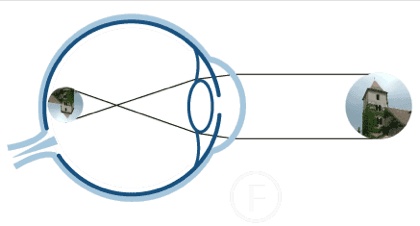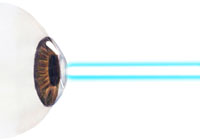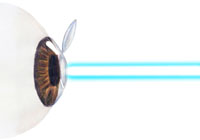Refractive Surgery - Laser
Under normal conditions, our eyes function like a camera focusing the image directly on the retina. However, in case of refraction errors the image is focused either in front of the retina (MYOPIA) or behind the retina (HYPEROPIA), thus resulting in blurred image. In the past, our only choice for addressing refractive errors was the right pair of glasses or contact lenses. Today, with the help of refractive surgery we ensure the best possible vision without glasses or contact lenses.

Nowadays refractive surgery in Greece is a benchmark for the whole world. Refractive errors (Myopia, Hyperopia and Astigmatism) are corrected with excellent results in the majority of cases, and even possible complications are minimized. Today we use several safe methods for refractive surgery and the patient can choose the most suitable method for him/her after consulting the ophthalmologist.
 |
 |
What are the most common methods?
PRK - Photorefractive keratectomy
We remove the corneal epithelium and then apply a laser to “reshape” the cornea and its refractive power. The procedure is short and painless. Then we place a protective contact lens in order to allow the damaged epithelium to heal nicely.
 PRK is a safe method to correct myopia, with exceptional results. It is a preferable method to correct mild myopia, and it is the preferable method used in case of marginally sufficient corneal thickness. However, it has some significant disadvantages in case of severe astigmatism and hyperopia, while at the same time requires a longer period for vision recovery.
PRK is a safe method to correct myopia, with exceptional results. It is a preferable method to correct mild myopia, and it is the preferable method used in case of marginally sufficient corneal thickness. However, it has some significant disadvantages in case of severe astigmatism and hyperopia, while at the same time requires a longer period for vision recovery.
LASIK - Laser in situ - Keratomileusis
With the help of the femtosecond laser, we create a corneal flap, under which the refractive laser is applied. Creating the thinnest flaps, this relatively new technology allows us to obtain excellent results and fewer complications compared to older technology with the use of microkeratomes. In substance, such created flap, covering the central area, ensures significant reduction of the recovery period. We can safely correct with Femto Lasik high refractive errors, including severe hyperopia, which has always been a problem in Refractive Surgery.
 FEMTO LASIK is actually the newest and most popular method of refractive surgery, with excellent results. It is a preferable method to correct severe myopia, hyperopia or astigmatism while fast and painless recovery of vision is the reason that makes it very popular. However, in case of marginally sufficient corneal thickness (which is detected before surgery), this method is contraindicated due to a greater risk of complications.
FEMTO LASIK is actually the newest and most popular method of refractive surgery, with excellent results. It is a preferable method to correct severe myopia, hyperopia or astigmatism while fast and painless recovery of vision is the reason that makes it very popular. However, in case of marginally sufficient corneal thickness (which is detected before surgery), this method is contraindicated due to a greater risk of complications.
What is the treatment for severe refractive errors?
In cases of a particularly high refractive error and when laser correction is not possible, we can still deal with it. We can place a corrective intraocular lens, with or without removal of the human crystalline lens (this is the technique we apply to remove cataracts as well).
In such a case, the selected intraocular lens corrects a refractive error and under certain conditions treats presbyopia in patients at older ages as well.
Am I suitable for one of the two methods?
Many patients wish to correct refractive errors of their eyes with the help of laser technology. However, laser treatment is not always suitable either due to the individual characteristics of the eye, or because of the general health of the patient. Refractive surgery, like any other types of surgical procedure, has contraindications, which do not allow using laser technology.
However, a thorough examination by the experienced ophthalmologist, as well as a number of special tests allow the doctor to determine whether the patient is suitable for one of the methods of refractive surgery. We should always take into account the general status of the patient’s health and individual suitability of his/her eyes. To be suitable for refractive surgery of any sort, a patient should be over 19 years of age with no change in spectacle or contact lens prescription over the last year and without significant eye problems.
In any case, refractive surgery is the best solution for getting rid of corrective glasses and contact lenses, significantly improving the quality of life. Today a patient can successfully address myopia, astigmatism or hyperopia knowing in detail the whole procedure, in order to avoid possible inconvenience and reduce the risk of complications.
Digital content is courtesy of Prof.Oliver Findl www.findl.at
Digital content is courtesy of Alcon Iberia
Digital content: Credit to National Eye Institute, National Institutes of Health.




